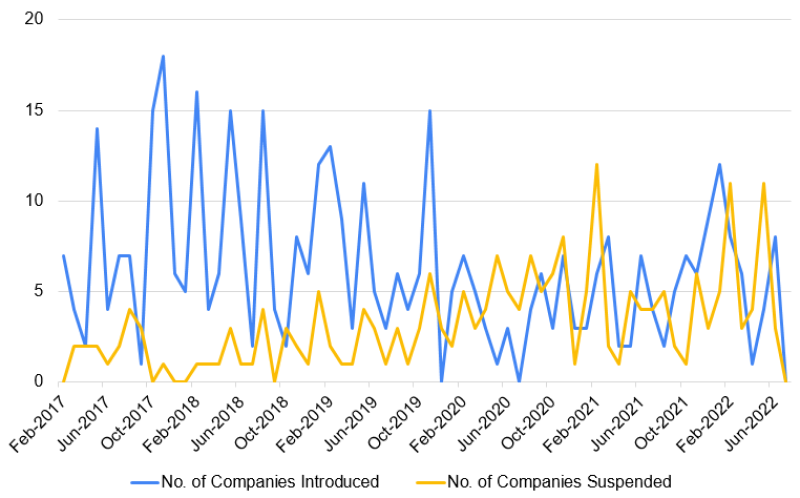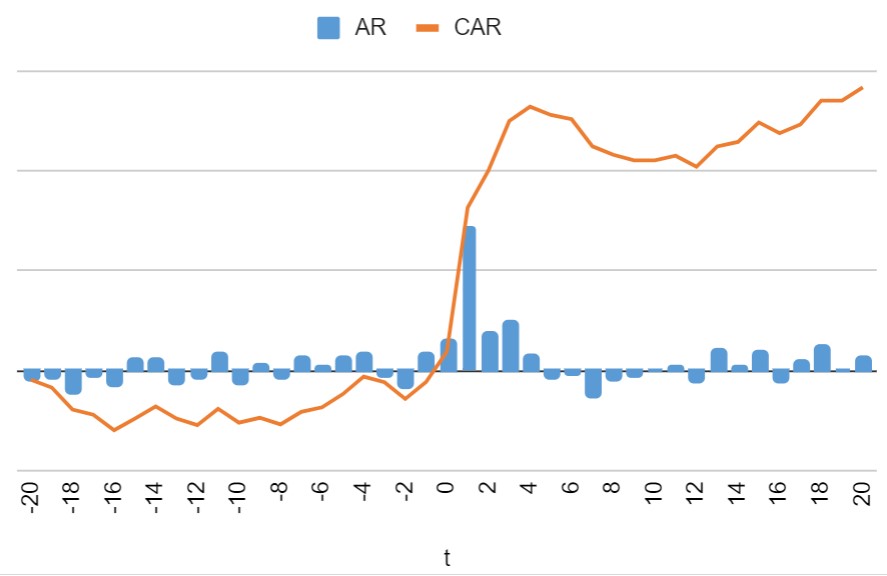Japan Markets ViewShareholder Benefits Still Boosting Stock Prices
Sep 27, 2022

Shareholder benefit programs are a unique feature of many issues on the Japanese stock market, and they are popular among individual investors. If listed in the shareholders’ register on a certain allotment date, the owner of the relevant stock is entitled to receive shareholder benefits in addition to dividend payments. While a direct relationship between dividend increases/decreases and stock prices has been confirmed, this article examines whether shareholder benefits also affect stock prices.
Shareholder Benefit Programs – Unique to Japan
Shareholder benefit programs are a distinctive characteristic of the Japanese market, whereby many companies offer goods, services (sometimes including their own products), or discount coupons once or twice a year to shareholders who hold a certain number of shares or more. In many cases, companies introduce shareholder benefits to attract stable shareholders who can be expected to hold stock for a long time and to promote their products. In addition, the value of shareholder benefits is often high in relation to amounts invested. Some investors consider the benefits, together with dividends, to constitute the real yield. Japanese individual investors tend to place a high value on shareholder benefits, and the introduction or abolition of such programs is thought by many to be a factor that moves stock prices.
The Japan Securities Dealers Association (JSDA) has published the results of an online survey of 5,000 individual investors (aged 20 and over) across Japan regarding the actual status of their securities holdings, their attitudes toward securities investment, and other matters. According to the survey, which was conducted in February 2022, 32.7% of individual investors selected “to receive shareholder benefits” as the purpose of their securities purchases. This was the fourth most common reason given, following “to fund post-retirement living expenses” (59.2%), “to earn dividends, distributions, and interest” (49.2%), and “to manage assets for the long term without a specific use planned” (45.1%).
Moreover, 12.1% of individual investors answered that they “place importance on shareholder benefits” in their stock investment strategies. This came in third after “generally hold shares for a long time, but sell them if there is some gain in price” (50.5%) and “place importance on dividends, distributions, and interest (sell shares depending on dividends and other conditions)” (19.5%). These results also show that individual investors value shareholder benefits.
The Discontinuation of Shareholder Benefit Programs
Recently, however, there has been a growing trend toward reconsidering the granting of shareholder benefits, mainly for the following three reasons.
The first is the deteriorating corporate performance and the uncertainty of the business environment during the COVID-19 pandemic. Shareholder benefits come with considerable cost requirements, which have made many companies discontinue or reduce them in the wake of COVID-19 outbreak.
The second reason is the decrease in the minimum number of shareholders required to be listed following market restructuring of the TSE, which took place in April 2022. Since many companies offer shareholder benefits to increase the number of individual shareholders, the relaxation of the criteria for maintaining listing has likely reduced the incentive for companies to continue such programs.
The third reason relates to “fair returns to shareholders.” Foreign investors and large institutional investors find it difficult to use shareholder benefits even if they receive them. Many of them decline the benefits because they do not want to receive a large quantity of a company’s products. These investors have voiced their opinion that shareholder benefit programs are unfair, and there is a growing tendency to value dividends as a means of returning profits to shareholders.
QUICK independently analyzes and accumulates disclosure materials posted on TDnet. The chart below shows the results of “introduction/suspension” of shareholder benefits disclosed on TDnet.

In the days following April 2020, with the COVID-19 pandemic becoming increasingly serious, the number of companies introducing shareholder benefit programs decreased, while the number of companies suspending them increased. On a longer timescale, from 2017 to 2019, the number of companies that introduced the programs was significantly higher than the number of companies that suspended the programs. However, in 2020, the situation reversed, making the former number smaller than the latter. It is expected that in 2022 and beyond, the number of companies suspending the programs will increase, given the TSE’s market restructuring.
Impact of Introduction of Shareholder Benefits on Stock Prices
How do shareholder benefits impact stock prices? An examination of the relationship finds a significant positive impact.
For 113 companies that announced the introduction of shareholder benefits after April 2020, when the trend to abolish them had become more widespread, the average abnormal return after the announcement (AR, or the actual return minus the TOPIX return, which is the return obtained with the introduction of shareholder benefits) and the cumulative abnormal return (CAR, or the cumulative value of the abnormal return) were calculated. The horizontal axis of the chart below shows the number of days since the time of announcement (t = 0). The vertical bar chart represents the AR, and the line chart indicates the CAR.

On the day following the announcement that shareholder benefits would be introduced (t = 1), the abnormal return was significantly positive. During the three days following the announcement, a significantly larger positive return was observed, and the cumulative abnormal return was significantly positive.
Data on Shareholder Benefits Provided by QUICK
While it has been recognized in the market that information on changes to shareholder benefit programs affect stock prices, this article verified that the introduction of such programs still significantly boosts a company’s stock price, even now that the trend to abolish shareholder benefit programs has spread.
QUICK analyzes shareholder benefits information disclosed on TDnet and provides updated information on such benefits, classified into the four categories of “introduction,” “change,” “suspension,” and “other” based on document titles. It also makes data available regarding the monetary values of shareholder benefits.
Update on Shareholder Benefits on QUICK Data Factory
https://corporate.quick.co.jp/data-factory/en/product/data019/
Equivalent Value of Shareholder Benefits on QUICK Data Factory
https://corporate.quick.co.jp/data-factory/en/product/data030/




